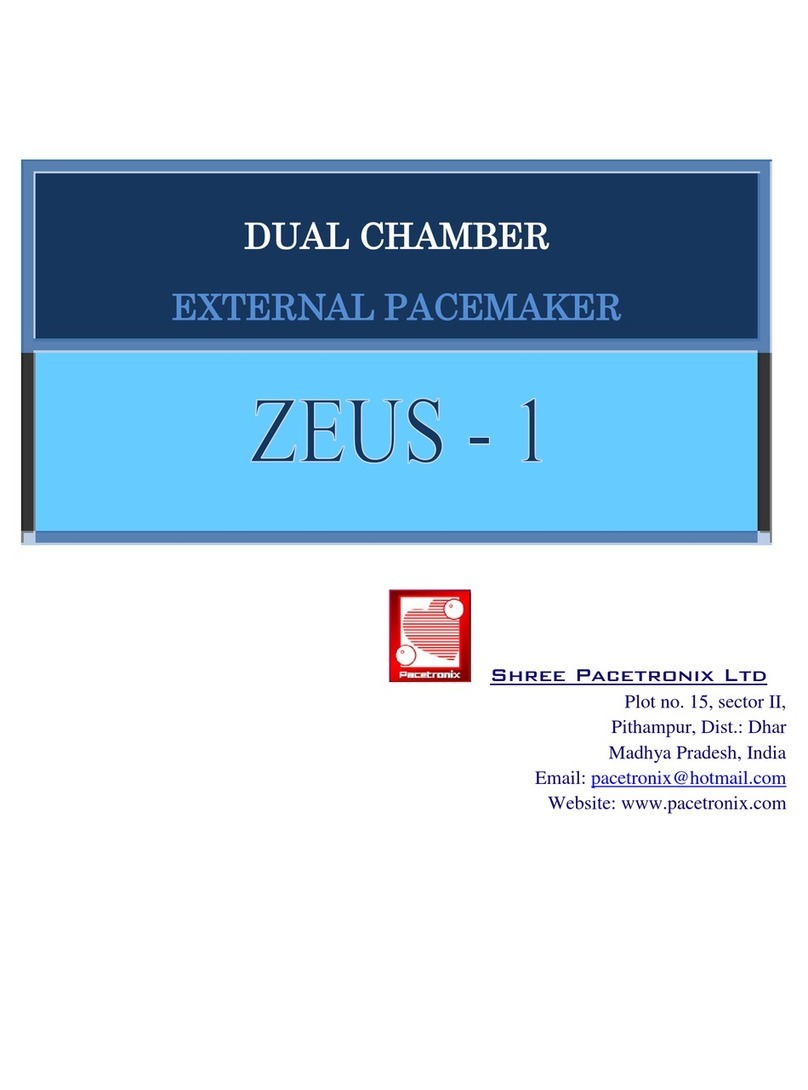
SHREE PACETRONIX LTD.
-----------------------------------------------------------------------------------------------------------
Page 4of 23
Contents
1. General Description...........................................................................6
a. Indications for use.........................................................................6
b. Contraindications.......................................................................7
2. Package Contents...............................................................................9
3. Safety Features...................................................................................9
4. Specification........................................................................................9
4.1 Technical Data ............................................................................10
4.2 Mechanical Data .........................................................................11
4.3 Nominal Values...............................Error! Bookmark not defined.
5. Function and Description................................................................12
5.1 Functional Indicators .................................................................12
5.1.1 Pacing.....................................................................................12
5.1.2 Sensing...................................................................................12
5.1.3 Low Battery indication ..........................................................12
5.2 Controls........................................................................................12
5.2.1 Rate (ppm) .............................................................................12
5.2.2 Output / Pulse Amplitude (Volts)..........................................13
5.2.3 Sensitivity (milli Volts) .........................................................13
5.2.4 Mode ......................................................................................13
6. Operating Instructions....................................................................14
6.1 On / Off Switch...........................................................................14
6.2 Rate Controls..............................................................................14
6.3 Sensitivity control........................................................................14
6.4 Demand and asynchronous Modes ............................................14
6.5 Collet terminals............................................................................14
6.6 Lead placement............................................................................15
6.7 Battery replacement.....................................................................16
7. Interference Rate, High Rate protection & O/D facility..............16




























